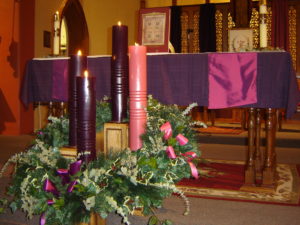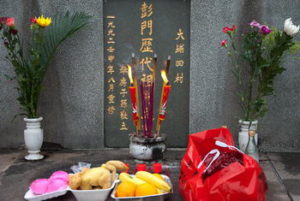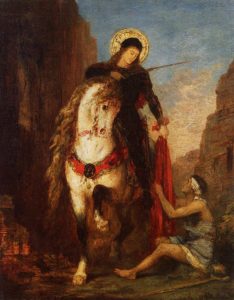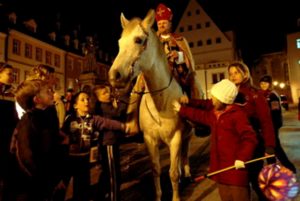 I wish you all a happy and prosperous New Year! 2017 was a difficult year for many people but I can feel that 2018 will be a time to reap the rewards of the hard work and lessons of the past year. I am not an expert in astrology, but a friend of mine who is has been telling me that this year will be filled with unique planetary alignments that will make 2018 a time of spectacular energy, positive change and the planets will truly be on our side as we work toward achieving our goals. For many people, weight loss and improved health is often a resolution for the New Year, so I thought I would share one of my favorite spells for weight loss.
I wish you all a happy and prosperous New Year! 2017 was a difficult year for many people but I can feel that 2018 will be a time to reap the rewards of the hard work and lessons of the past year. I am not an expert in astrology, but a friend of mine who is has been telling me that this year will be filled with unique planetary alignments that will make 2018 a time of spectacular energy, positive change and the planets will truly be on our side as we work toward achieving our goals. For many people, weight loss and improved health is often a resolution for the New Year, so I thought I would share one of my favorite spells for weight loss.
This is one of my favorite spells to cast since it is about taking control over your weight and making a firm decision to commit to health and well-being. I designed this spell based on another ritual called a revocation that is performed in many spiritual traditions that is meant to expel bad luck, evil spirits and break curses that were placed by one’s enemies. In this case, what is being sent away is your fat. In addition to being highly effective in terms of weight loss, this spell is extremely empowering as when you perform it you are literally taking an oath to take charge over your own body and inviting health and happiness to your life.
You will need:
A small white or yellow candle
A small piece of paper and a pen
Think for a moment about the amount of weight you’d like to lose. Write the number of excess pounds on the piece of paper.
Light the candle.
Hold the piece of paper above the candle, but not yet touching the flame.
Say aloud in a confident, authoritative voice, “I cast out and expel from by body and life all unwanted and unnecessary psychical and spiritual weight. All that holds me back in life I send away to the wastelands where the shepherd does not graze his flock never to return to me. I am now and always in a perfect state of health and well-being. So be it.”
Touch the paper to the flame and allow it to burn to ashes on a heat resistant surface.
Extinguish the candle and then dispose of it. This is one of the rare occasions where I would advise you to extinguish a candle and not allowing it to burn out on its own. Once the paper is burned, it has served its purpose.
Take the ashes from the burnt paper and either scatter them into the wind or flush them down the toilet.
Walk away knowing that your excess weight is no longer a part of your life and it will quickly and easily fall away.
Happy Holidays and Many Blessings in the New Year!
 I just wanted to take this opportunity to wish you all a Merry Christmas, Happy New Year and happiness for whatever joyous, beautiful end-of-year holiday you may celebrate. This is one of my favorite times of year when we can take time to relax and look back of all that we’ve done and accomplished and make new plans for the coming year.
I just wanted to take this opportunity to wish you all a Merry Christmas, Happy New Year and happiness for whatever joyous, beautiful end-of-year holiday you may celebrate. This is one of my favorite times of year when we can take time to relax and look back of all that we’ve done and accomplished and make new plans for the coming year.
Sometime during the last week of December, I urge you to undertake some sort of spiritual cleansing such as a simple salt water bath or running an egg down your body from head to toe and then disposing of it outside or by breaking it in the toilet and flushing it. This will remove any negative spiritual residue or bad luck from the previous year and allow you to start the New Year spiritually clean. Also, as some to midnight as possible on New Year’s Eve, take a shower and while the water streams down pour a bottle of cheap champagne or sparkling wine, beer or ginger ale over your head. The gold color symbolizes wealth and the bubbles symbolize lifting you to a higher position in life. This is a popular tradition practiced in Puerto Rico and the Dominican Republic and is a perfect want to start the New Year with a vibe of wealth and success.
Thank you for following my blog throughout this year and it is my sincere wish that abundant blessings rain down on all of you and that the year to come be filled with peace, love, good health, wealth and happiness!
Advent
We are headi ng full force into the holiday season which for me has always been one of the most wonderful times of the year, but for many it can also be the most stressful and dare I say depressing periods of the year due to the rampant stress and pressure to create an ideal holiday experience for loved ones not to mention the greed and materialism that is afoot. Historically speaking, the four weeks before Christmas were a time of fasting, prayerful contemplation and joyful waiting known as Advent which coming from the Latin Adventus being a direct translation from the Greek Parousia meaning “coming.” Advent is a time to focus on the spiritual meaning of Christmas and to practice the virtues of Faith, Hope and Charity. I find that keeping the spirit of Advent in our hearts and actively participating in some Advent traditions is the perfect antidote to the materialism and commercialism associated with the holidays in modern times and is the key to having a wonderful and blessed holiday season.
ng full force into the holiday season which for me has always been one of the most wonderful times of the year, but for many it can also be the most stressful and dare I say depressing periods of the year due to the rampant stress and pressure to create an ideal holiday experience for loved ones not to mention the greed and materialism that is afoot. Historically speaking, the four weeks before Christmas were a time of fasting, prayerful contemplation and joyful waiting known as Advent which coming from the Latin Adventus being a direct translation from the Greek Parousia meaning “coming.” Advent is a time to focus on the spiritual meaning of Christmas and to practice the virtues of Faith, Hope and Charity. I find that keeping the spirit of Advent in our hearts and actively participating in some Advent traditions is the perfect antidote to the materialism and commercialism associated with the holidays in modern times and is the key to having a wonderful and blessed holiday season.
In Western Christianity, Advent marks the beginning of the liturgical year and is a time of anticipation for the coming of Christmas. It is a time to focus not only on Jesus’s birth in Bethlehem but His coming into the hearts of the faithful and His glorious return at the end of time. In fact, during this liturgical season, the church readings are about the end of the world and preparation for the second coming. Advent is a time of sacrifice and penance in preparation for the great feast of Christmas. Church décor tends to be somber and no flowers and permitted during this season, except on the third Sunday of Advent known as “Gaudete Sunday” or “Joyous Sunday” a day on which the joy of the coming of Christmas is especially celebrated. The liturgical vestments of Advent are purple expect for Gaudete Sunday when rose colored vestments are used. An Advent wreath made of evergreen branches symbolizing eternal life and three purple candles and one pink candle representing the four Sundays of Advent are indispensable in any church. In Eastern Christianity, Advent starts earlier, on the 15th of November, and is a time of strict fasting during which the faithful abstain from all meat and dairy products. Fasting during Advent is an ancient practice that goes back to at least the 3rd century AD and still continues to be vigorously observed in the East whereas the emphasis tends to be placed on the joyful waiting for Christmas in the West.
Aside from the official church observance of Advent, several popular customs are practiced in various locations. Traditionally, in parts of northern Britain women would make two dolls representing Jesus and the Blessed Virgin Mary and go from house to house asking for alms. The tradition bears a striking resemblance to souling which was practiced around All Saints’ Day. The begging of alms before Christmas was practiced well into the early 20th century. In Normandy, during Advent there was a practice which involved young children under the age of 12 carrying torches over fields to bless them for the coming growing season. While these last two traditions seem to have disappeared into the past, it is still common in many parts of the world for people to keep Advent calendars in their homes and to open a new window on the calendar each day leading up to Christmas. Advent wreaths are also kept in many homes and families will often light a new candle each Sunday in anticipation of Christmas.
I hope you have enjoyed this post on the Advent season and if you feel bogged down by the fast pace and materialism of the holidays season, I urge you to take a few moments to focus on the chartable and spiritual values which are the central focus of advent. As always I thank you for taking the time to visit my blog and I wish you peace, happiness and abundant blessings!
Chung Yeung Festival
 The month of November is now halfway over and we are heading towards Thanksgiving and the Holiday season, one of the most magical and fun times of the year. In the past I have written about the many important holy days that occur towards the end of November and into December leading up to Christmas and the New Year. This is a truly wonderful period with deep spiritual significance. I would like to discuss an Asian holiday that shares many of the principles of gratitude and family unity with the American observance of Thanksgiving. This is Chung Yeung or Double Ninth Festival which is celebrated throughout China, Japan, Vietnam and Asian communities throughout the world. Chung Yeung is a holiday that encourages people to take a day out of their busy schedules to honor their ancestors and spend quality time with family, especially the elderly, and otherwise stop for a moment and enjoy themselves and give thanks for the many blessings in life.
The month of November is now halfway over and we are heading towards Thanksgiving and the Holiday season, one of the most magical and fun times of the year. In the past I have written about the many important holy days that occur towards the end of November and into December leading up to Christmas and the New Year. This is a truly wonderful period with deep spiritual significance. I would like to discuss an Asian holiday that shares many of the principles of gratitude and family unity with the American observance of Thanksgiving. This is Chung Yeung or Double Ninth Festival which is celebrated throughout China, Japan, Vietnam and Asian communities throughout the world. Chung Yeung is a holiday that encourages people to take a day out of their busy schedules to honor their ancestors and spend quality time with family, especially the elderly, and otherwise stop for a moment and enjoy themselves and give thanks for the many blessings in life.
 Chung Yeung or the Double Ninth Festival takes its name from the fact that it falls on the 9th day of the 9th lunar month which roughly corresponds to late October on the western calendar. The number nine is considered highly auspicious in Chinese numerology and many weddings and other important events are planned on the 9th of the month. Chung Yeung is considered highly auspicious since it falls both on the 9th day and during the 9th month. This festival dates back to at least the 1st century AD and has its roots in a story involving a man named Huang Jing who believed that a monster was causing hardship to the land. He told his fellow villagers to hide on a mountain while he defeated the monster. Once the creature was subdued, the villagers returned and celebrated Huang Jing’s victory over the beast which happened to fall on the 9th day of the 9th lunar month, a feat and date which are commemorated to this day in the festival of Chung Yeung.
Chung Yeung or the Double Ninth Festival takes its name from the fact that it falls on the 9th day of the 9th lunar month which roughly corresponds to late October on the western calendar. The number nine is considered highly auspicious in Chinese numerology and many weddings and other important events are planned on the 9th of the month. Chung Yeung is considered highly auspicious since it falls both on the 9th day and during the 9th month. This festival dates back to at least the 1st century AD and has its roots in a story involving a man named Huang Jing who believed that a monster was causing hardship to the land. He told his fellow villagers to hide on a mountain while he defeated the monster. Once the creature was subdued, the villagers returned and celebrated Huang Jing’s victory over the beast which happened to fall on the 9th day of the 9th lunar month, a feat and date which are commemorated to this day in the festival of Chung Yeung.
Presently, Chung Yeung is celebrated throughout China, Japan and Vietnam and in Asian communities around the world. In Chinese folklore, it is believed that the world is filled with both Yang which is male energy and Yin which is feminine energy and Chung Yeung is considered a date that is highly Yang, so activities such as eating sweet cakes and drinking chrysanthemum tea are common since they bring Yin energy to achieve balance. In fact, the chrysanthemum is such an iconic image of Chung Yeung that the holiday is known commonly in Japan as the Chrysanthemum Festival where it is often celebrated according to the Gregorian calendar on September 9th and not on the traditional Chinese date. Mountain climbing is also a popular activity on Chung Yeung in commemoration of Huang Jing’s defeat of the monster during which the villagers took refuge on a mountain. As is common with many Chinese observances, ancestor veneration is widely practiced especially in Hong Kong and Southern China and large quantities of spirit money are burned at ancestral graves and food offerings are made. It is also important to spend quality time with family and loved ones on this date. In Taiwan, Chung Yeung has been celebrated as Senior Citizens’ Day since the 1960’s. The longing for closeness with one’s family at Chung Yeung is expressed beautifully in the following poem:
獨在異鄉為異客,
每逢佳節倍思親。
遙知兄弟登高處,
遍插茱萸少一人。
As a lonely stranger in a foreign land,
At every holiday my homesickness increases.
Far away, I know my brothers have reached the peak;
They are wearing the zhuyu, but one is not present.
I hope you have enjoyed this post and in the future we can all make a point of spending time with living relatives and friends and honoring our ancestors on Chung Yeung and always. I thank you for taking the time to visit my blog and as always I wish you peace, happiness and abundant blessings!
Saint Martin’s Day
 As I publish this blogpost, I am happy to say that Halloween has officially arrived! The air is permeated with magic and the veil between the worlds is so thin that I can see and feel spirits around every corner! This is truly the most amazing time of year. The topic of today’s post is Saint Martin’s Day, a holiday that we have not yet discussed on this blog yet one that has strong spiritual elements and is a celebration of the late harvest much like Halloween and the American Thanksgiving. Saint Martin’s Day, which falls of the 11th of November is also known as Old Halloween due to the fact that it had been celebrated on October 31st in the British Isles prior to 1752 when the Gregorian calendar was adopted thus shifting the date 11 days forward. This would account for why many of the traditions commonly associated with Halloween such as the wearing of costumes, bonfires and activities similar to trick-or-treat were carried over to St. Martin’s Day and still continue to be observed in various countries throughout Europe. I would like to explore some of the customs associated with this special day.
As I publish this blogpost, I am happy to say that Halloween has officially arrived! The air is permeated with magic and the veil between the worlds is so thin that I can see and feel spirits around every corner! This is truly the most amazing time of year. The topic of today’s post is Saint Martin’s Day, a holiday that we have not yet discussed on this blog yet one that has strong spiritual elements and is a celebration of the late harvest much like Halloween and the American Thanksgiving. Saint Martin’s Day, which falls of the 11th of November is also known as Old Halloween due to the fact that it had been celebrated on October 31st in the British Isles prior to 1752 when the Gregorian calendar was adopted thus shifting the date 11 days forward. This would account for why many of the traditions commonly associated with Halloween such as the wearing of costumes, bonfires and activities similar to trick-or-treat were carried over to St. Martin’s Day and still continue to be observed in various countries throughout Europe. I would like to explore some of the customs associated with this special day.
 November 11th is the Feast of Saint Martin of Tours who was a 4th century Roman soldier originally from what is today Hungary who converted to Christianity as an adult and was baptized by a monk and later consecrated as a bishop in the Roman province of Gaul, which is today France. St. Martin was known for his humility and acts of charity, but also for his strength and power. A popular legend claims that Martin was so humble that he did not want to be proclaimed a bishop, so he hid in a barn surrounded by geese who gave him away by making noise. He was thus found and declared bishop of Tours, France. Due to this legend, roast goose is a popular food served on Saint Martin’s Day in Scandinavian countries. During the Middle Ages, the cult of Saint Martin of Tours spread throughout Europe and due to his examples of kindness, humility and charity he became known as a powerful intercessor and benefactor to those in need.
November 11th is the Feast of Saint Martin of Tours who was a 4th century Roman soldier originally from what is today Hungary who converted to Christianity as an adult and was baptized by a monk and later consecrated as a bishop in the Roman province of Gaul, which is today France. St. Martin was known for his humility and acts of charity, but also for his strength and power. A popular legend claims that Martin was so humble that he did not want to be proclaimed a bishop, so he hid in a barn surrounded by geese who gave him away by making noise. He was thus found and declared bishop of Tours, France. Due to this legend, roast goose is a popular food served on Saint Martin’s Day in Scandinavian countries. During the Middle Ages, the cult of Saint Martin of Tours spread throughout Europe and due to his examples of kindness, humility and charity he became known as a powerful intercessor and benefactor to those in need.
 The modern day celebration of Saint Martin’s Day has much in common with Halloween and even the American observance of Thanksgiving. This is perhaps due to the fact that when the Julian calendar was in use, the feast fell on the 31st of October and then moved to the 11th of November with the adoption on the Gregorian calendar. For this reason the day is often known as Old Halloween or Old Hallowmas. Many of the traditions associated with Halloween such as bonfires, costume parties and parades and the carrying of lanterns, even sometimes jack-o-lanterns, have become commonplace on the feast of Saint Martin. It is also common for villages and towns throughout Europe to host St. Martin Day parades where a costumed person on horseback representing St. Martin is followed by groups of costumed children. Begging for candy door to door in a ritual similar to trick or treat is also common. St. Martin’s Day is also seen as a festival of the late harvest and a time to enjoy and give thanks for the abundance of produce received from the earth. In Spain, Saint Martin’s day is a traditional day for slaughtering farm animals and preparing meat for the winter ahead as can be seen in the popular refrain, A todo cerdo le toca su San Martín, “every pig has his Saint Martin’s Day.” In the United Kingdom there is a particular folk belief surrounding the weather on Saint Martin’s Day. It is believed that if it is cold of Saint Martin’s Day, then the winter will be mild but it is warm, then an icy cold winter will follow. There is often a snap of warmer weather around Saint Martin’s Day that is called Martin’s Summer, similar to the concept of an Indian summer in North America. In short, the Feast of Saint Martin is a day filled with magic, tradition and lore and one that celebrates a beautiful and powerful saint who is an example of kindness, charity and love.
The modern day celebration of Saint Martin’s Day has much in common with Halloween and even the American observance of Thanksgiving. This is perhaps due to the fact that when the Julian calendar was in use, the feast fell on the 31st of October and then moved to the 11th of November with the adoption on the Gregorian calendar. For this reason the day is often known as Old Halloween or Old Hallowmas. Many of the traditions associated with Halloween such as bonfires, costume parties and parades and the carrying of lanterns, even sometimes jack-o-lanterns, have become commonplace on the feast of Saint Martin. It is also common for villages and towns throughout Europe to host St. Martin Day parades where a costumed person on horseback representing St. Martin is followed by groups of costumed children. Begging for candy door to door in a ritual similar to trick or treat is also common. St. Martin’s Day is also seen as a festival of the late harvest and a time to enjoy and give thanks for the abundance of produce received from the earth. In Spain, Saint Martin’s day is a traditional day for slaughtering farm animals and preparing meat for the winter ahead as can be seen in the popular refrain, A todo cerdo le toca su San Martín, “every pig has his Saint Martin’s Day.” In the United Kingdom there is a particular folk belief surrounding the weather on Saint Martin’s Day. It is believed that if it is cold of Saint Martin’s Day, then the winter will be mild but it is warm, then an icy cold winter will follow. There is often a snap of warmer weather around Saint Martin’s Day that is called Martin’s Summer, similar to the concept of an Indian summer in North America. In short, the Feast of Saint Martin is a day filled with magic, tradition and lore and one that celebrates a beautiful and powerful saint who is an example of kindness, charity and love.
I hope you have enjoyed this post and I thank you for taking the time to visit my blog. As always, I wish you peace, happiness and abundant blessings!